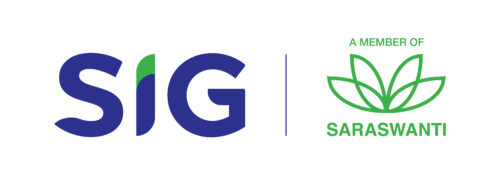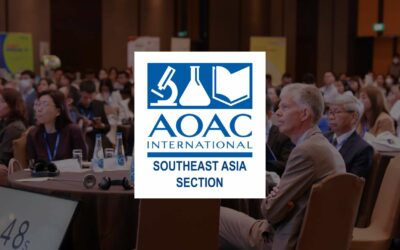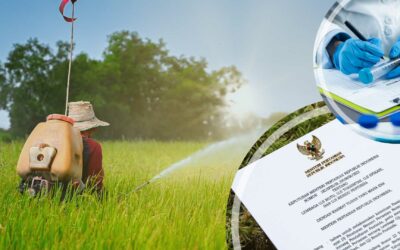Mikotoksin
– Alergen
– Asam Amino
– Antibiotik
– Antioksidan
– Kontaminan
– Dioksin & PCBs
– Asam Lemak
– Serat
– Pewarna Makanan
– Pengawet makanan
– GMO & Biologi Molekuler
– Logam Berat
– Mikrobiologi
– Mineral & Unsur
– Mikotoksin
– Asam Organik
– Residu Pestisida
– Analisa Proksimat
– Penentuan Umur Simpan
– Residu Pelarut
– Gula & Pemanis
– Vitamin
Mikotoksin adalah senyawa beracun yang secara alami diproduksi oleh jenis jamur tertentu. Kapang yang dapat menghasilkan mikotoksin tumbuh pada berbagai bahan makanan seperti sereal, buah-buahan kering, kacang-kacangan, dan rempah-rempah. Pertumbuhan kapang dapat terjadi baik sebelum panen atau setelah panen, selama penyimpanan, di/dalam makanan itu sendiri seringkali dalam kondisi hangat, lembab, dan lembab. Sebagian besar mikotoksin stabil secara kimiawi dan bertahan dalam pemrosesan makanan.
Efek dari beberapa mikotoksin yang terbawa makanan bersifat akut dengan gejala penyakit parah yang muncul dengan cepat setelah konsumsi produk makanan yang terkontaminasi mikotoksin. Mikotoksin lain yang terdapat dalam makanan telah dikaitkan dengan efek jangka panjang pada kesehatan, termasuk induksi kanker dan defisiensi imun.
Bagaimana SIG dapat membantu
Laboratorium SIG dapat membantu melakukan pengujian analisis mikotoksin pada berbagai macam matriks, seperti kacang-kacangan, rempah-rempah, sereal, susu, produk bayi, pakan ternak, dan sebagainya. Sehingga kami dapat memastikan apakah kontaminasi mikotoksin dalam produk Anda masih pada tingkat yang sesuai, sebagaimana ditentukan oleh peraturan nasional dan internasional. Itu membuat produk Anda memenuhi standar kualitas keamanan pangan.
Jenis mikotoksin yang dapat diuji di laboratorium SIG antara lain:
- Patulin
- Aflatoxin B1
- Aflatoxin B2
- Aflatoxin G1
- Aflatoxin G2
- Aflatoxin M1
- Fumonisins
- Ochratoxin A
- Zearalenone
- Nivalenol / Deoxynivalenol
Metode Analisis
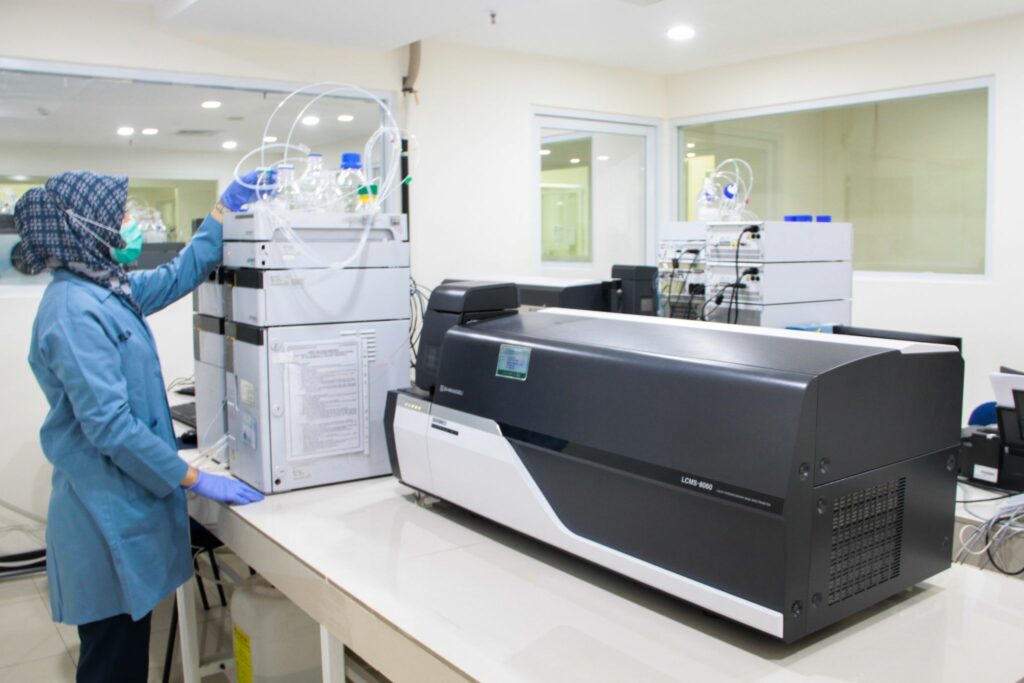
HPLC adalah teknik yang paling mungkin untuk digunakan dalam analisis mikotoksin dengan banyak detektor seperti UV-Vis, MS, dan MSMS.
Berita dan Informasi
Aktif Terlibat Dalam Forum Internasional: SIG Resmi Menjadi Bagian AOAC Southeast Asia
SIG telah meraih keanggotaan resmi dalam AOAC Southeast Asia (AOAC SEA). Langkah ini menandai komitmen SIG dalam mendukung perkembangan ilmu analisis dan pengujian ilmiah di wilayah Asia Tenggara. AOAC SEA adalah bagian dari AOAC Internasional yang merupakan sebuah organisasi global...
SIG Resmi Memperoleh Penunjukan dari KEMENTAN, Penuhi Kebutuhan Uji Mutu, Khasiat, dan Keamanan Pestisida
Pemanfaatan teknologi pengujian dan terdepan dalam pengembangan riset studi toksisitas, SIG berdasar Keputusan Menteri Pertanian RI No. 282 Tahun 2023 Sukses melengkapi penunjukannya sebagai lembaga uji...
SIG Gandeng Triskelion-Belanda: Membuka Peluang UKM Memasuki Pasar Eropa
SIG adalah laboratorium pengujian mutu dan keamanan produk terakreditasi ISO 17025 yang telah berpengalaman lebih dari satu dekade di dunia penelitian. Sejalan dengan semangat menjadi agen pendukung terciptanya dunia yang lebih aman #towardsasaferworld dan berperan aktif...
SIG Laboratory
Graha SIG, Jl Rasamala No. 20, Taman Yasmin, Bogor, Jawa Barat 16113.
Phone. +62 251 7532 348
WhatsApp. +62 82 111 516 516
Email. marketing-sig@saraswanti.com
SIG Jakarta
Jl. Percetakan Negara No. 52 B RT 006 / RW 001, Rawasari, Cempaka Putih, Jakarta Pusat 10570.
Phone. +62 21 2147 9292
SIG Surabaya
AMG Tower, 12th Floor, Jl. Dukuh Menanggal 1-A, Gayungan, Surabaya, Jawa Timur, 60234.
Phone. +62 31 8253 1288
WhatsApp. +62 818 885 165
Email. marketing@sigsurabaya.com
SIG Semarang
Jl. Kanfer Raya Blok R No. 4 Pedalangan, Kec. Banyumanik, Kota Semarang, Jawa Tengah 50268.
Phone. +62 24 7004 0541
WhatsApp. +62 812 9000 5165
Email. cs.sigsmg@saraswanti.com
SIG Medan
Jl. Bunga Asoka, Ruko Komp. Asoka Raya Residance No. 1, Medan Selayang, Sumatera Utara 20133,
WhatsApp. +62 822 7207 9665
Email. salesmedan.sig@saraswanti.com
SIG Yogyakarta
WhatsApp. +62 896 4856 9422
Email. arifin.sig@saraswanti.com
SIG Makassar
WhatsApp. +62 853 3843 9816
Email. anwar@sigsurabaya.com
Jam Operasional
Senin sd Jumat
08.00 - 17.00 WIB.

FOLLOW KAMI
